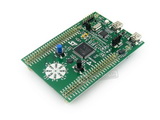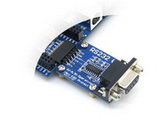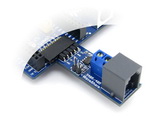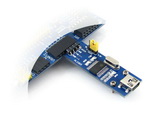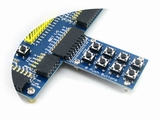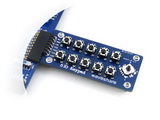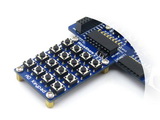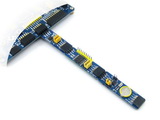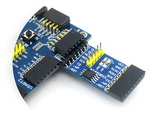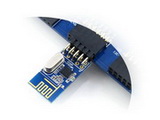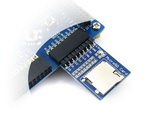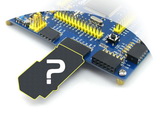Details
STM32 development board designed for the ST official tool STM32F3DISCOVERY, and integrates various standard interfaces, pretty easy for peripheral expansions.
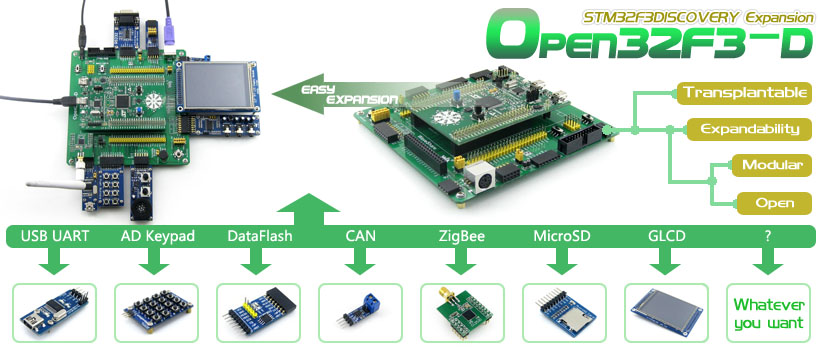
Overview
Open32F3-D is an STM32 development board designed for the ST official tool STM32F3DISCOVERY, which features the STM32F303VCT6 microcontroller onboard.
The Open32F3-D supports further expansion with various optional accessory boards for specific application. The modular and open design makes it the ideal for starting application development with STM32F3 series microcontrollers.
What's on the mother board

- STM32F3DISCOVERY socket: for easily connecting the STM32F3DISCOVERY
- ZigBee interface: for connecting ZigBee modules such as CC2530 module.
- USART2 interface: easily connects to RS232, RS485, USB TO 232, etc.
- ONE-WIRE interface: easily connects to ONE-WIRE devices (TO-92 package), such as temperature sensor (DS18B20), electronic registration number (DS2401), etc.
- 8I/Os interface: for connecting accessory boards such buttons, motors, etc.
- SPI1 / SPI2 + DAC + ADC interfaces:
- easily connects to SPI peripherals such as DataFlash (AT45DBxx), SD card, MP3 module, etc.
- easily connects to AD/DA modules
- Humidity sensor socket: for connecting humidity sensor such as HS1101LF, etc.
- I2S / I2C1 interface: easily connects to I2S peripherals such as audio module, etc.
- LCD connector: for connecting touch screen LCD
- CAN interface: communicates with accessory boards which feature the CAN device conveniently
- PS/2 interface: easily connects to PS/2 keyboard and/or mouse
- I2C1 / I2C2 interface: easily connects to I2C peripherals such as I/O expander (PCF8574), FRAM (FM24CLxx), etc.
- Resistive sensor socket: for connecting resistive sensor such as photoresistor, etc.
- USART1 interface: easily connects to RS232, RS485, USB TO 232, etc.
- 5V DC jack
- 5V/3.3V power input/output: usually used as power output, also common-grounding with other user board
- MCU pins connector: all the MCU I/O ports are accessible on expansion connectors for further expansion
- STM32-JTAG/SWD interface: for STM32 debugging/programming
- ZigBee-JTAG interface: for ZigBee debugging/programming
- Power switch
- Boot mode switch: for configuring BOOT0 pin
- Joystick jumper
- short the jumper to connect the joystick to default I/Os used in example code
- open the jumper to connect the joystick to custom I/Os via jumper wires
- PS/2 interface jumper
- short the jumper to connect the PS/2 devices to default I/Os used in example code
- open the jumper to connect the PS/2 devices to custom I/Os via jumper wires
- LDR jumper
- short the jumper to use resistive sensor, certain I/Os are required
- open the jumper to disconnect from the I/Os
- Humidity jumper
- connect the left two pins to retrieve data from capacitive sensor
- connect the right two pins to retrieve data from 180p capacitor (for testing)
- Power indicator
- Joystick: five positions
- ZigBee reset
What's on the STM32F3DISCOVERY
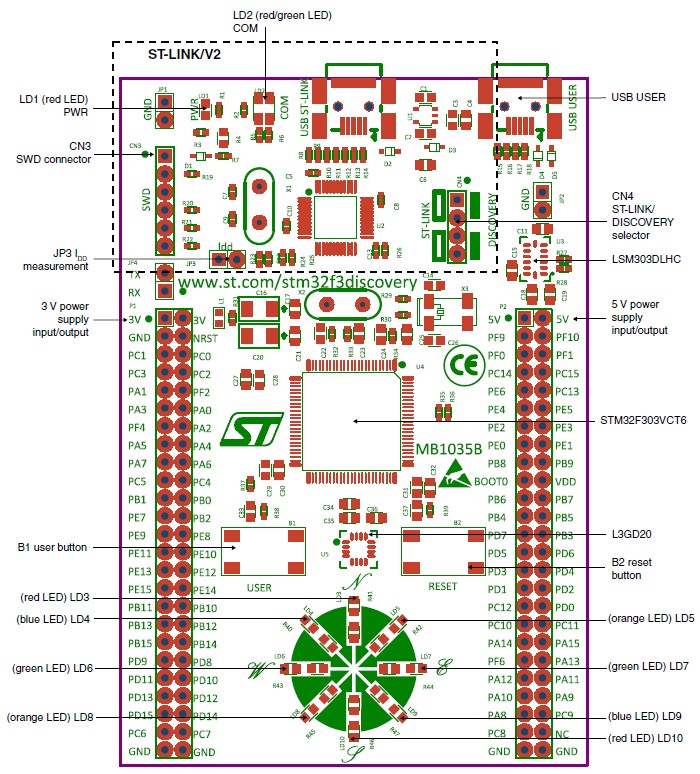
- STM32F303VCT6 microcontroller featuring 256 KB Flash, 48 KB RAM in an LQFP100 package
- On-board ST-LINK/V2 with selection mode switch to use the kit as a standalone ST-LINK/V2 (with SWD connector for programming and debugging)
- Board power supply: through USB bus or from an external 3 V or 5 V supply voltage
- External application power supply: 3 V and 5 V
- L3GD20, ST MEMs motion sensor, 3-axis digital output gyroscope
- LSM303DLHC, ST MEMs system-in-package featuring a 3D digital linear acceleration sensor and a 3D digital magnetic sensor
- Ten LEDs:
- LD1 (red) for 3.3 V power on
- LD2 (red/green) for USB communication
- Eight user LEDS, LD3/10 (red), LD4/9 (blue), LD5/8 (orange) and LD6/7 (green)
- Two pushbuttons (user and reset)
- USB USER with Mini-B connector
- Extension header for all LQFP100 I/Os for quick connection to prototyping board and easy probing
Photos
Note:
The Open32F3-D Standard does not include STM32F3DISCOVERY, nor any other accessory board.
JTAG/SWD interfaces
The figure 1, and 2 show the header pinouts of JTAG/SWD interface
Figure 1. JTAG Header Pinout
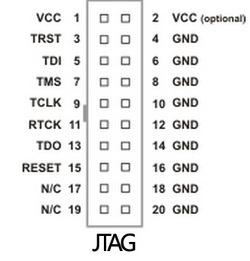

Figure 2. SWD Header Pinout
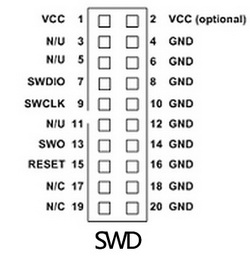

Development Resources
- Related software (KEIL etc.)
- Demo code (examples in C, μC/OS-II)
- Schematic (PDF)
- STM32 development documentations (Datasheet etc.)





